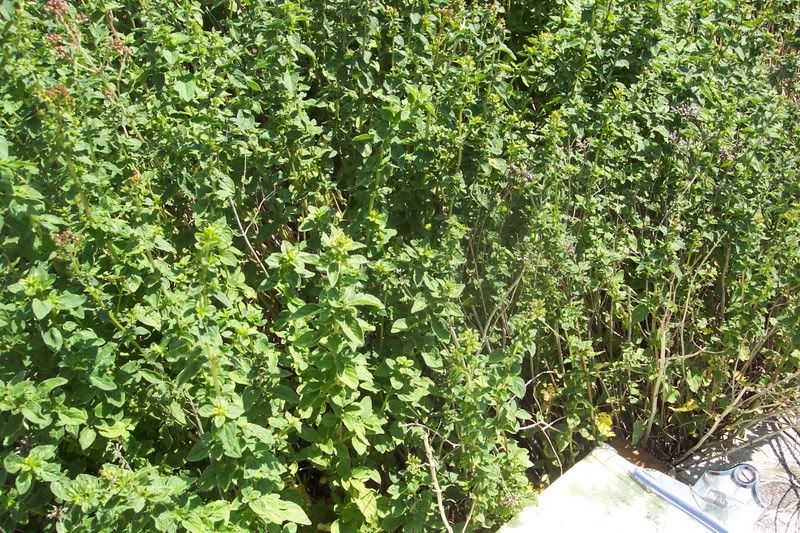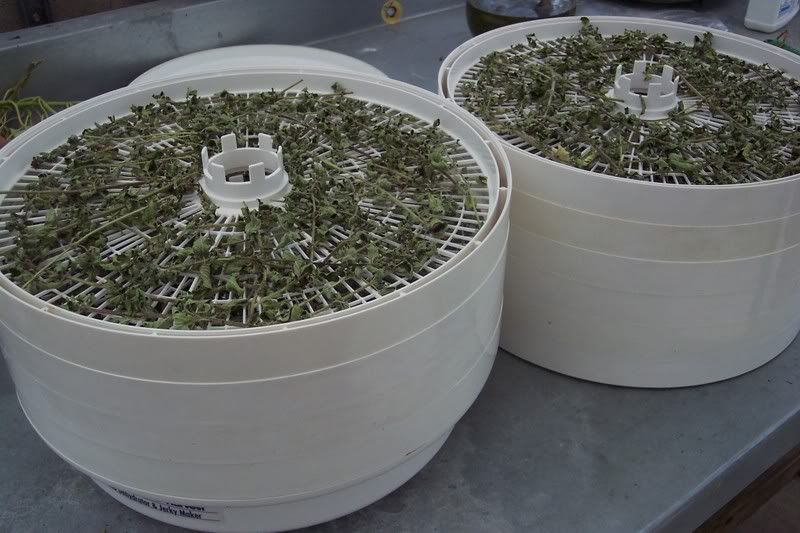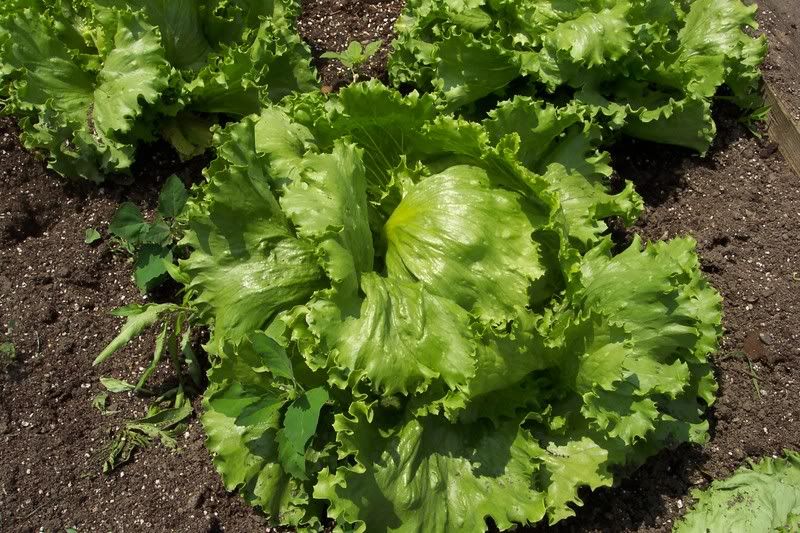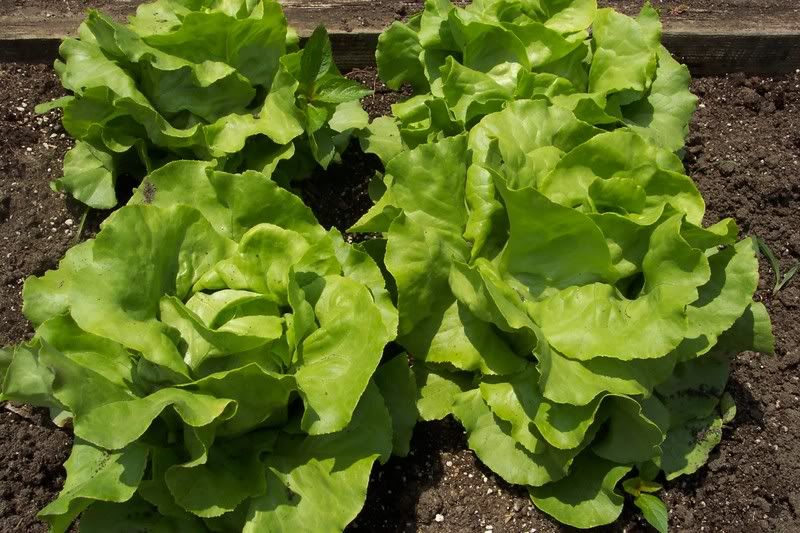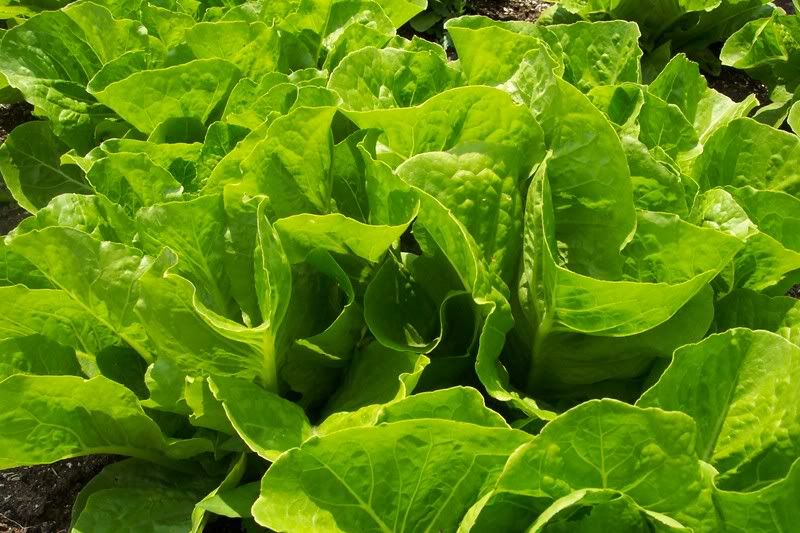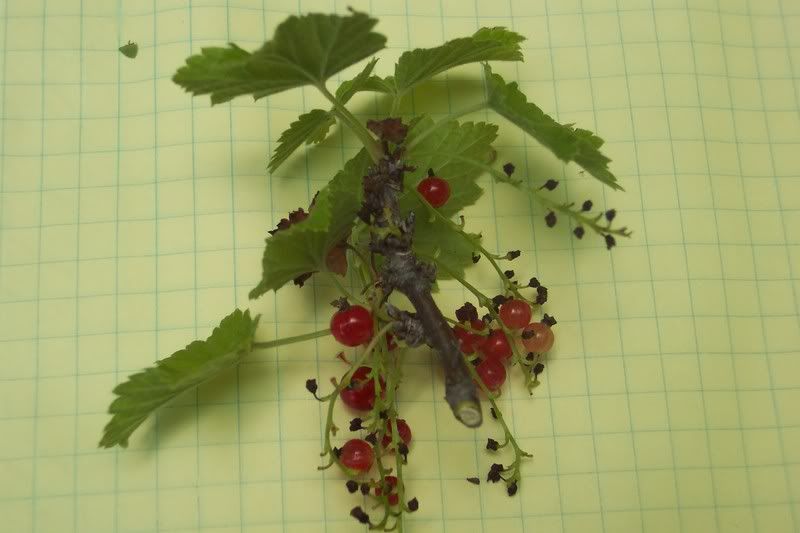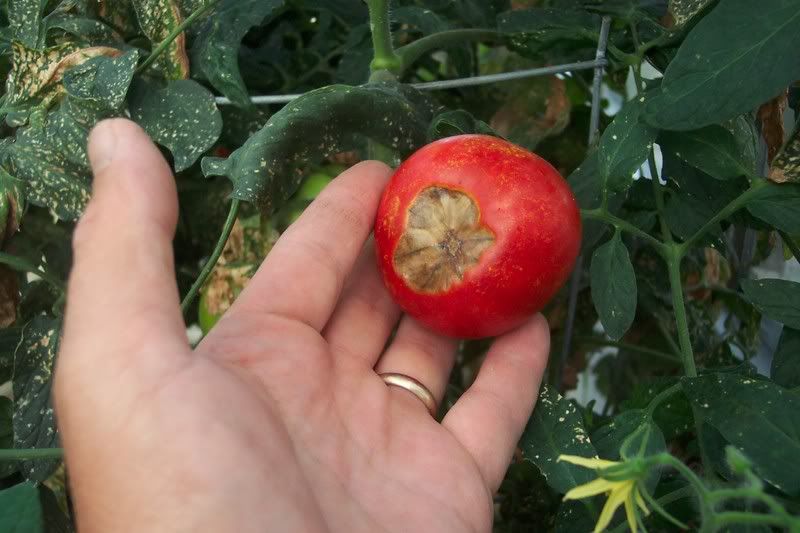I believe if you looked back and counted, you will find that I have posted more entries on the subject of Garlic than any other topic.
Well, here is another chapter in the garlic story…harvest time.
The garlic tops have mostly turned yellow and fallen over. That’s the signal. It’s time to dig the garlic. Many people suggest that you knock over all of the plants at this time and let them dry further in the garden. We don’t do that because we have overhead irrigation and the combination of water and garden soil tends to stain the outside skin of the garlic bulb. Staining doesn’t hurt them, but they just don’t look as nice.

We just loosen up the soil near each garlic plant with a garden fork to help us lift them from the bed.
After digging, they get a quick rinse from the garden hose.
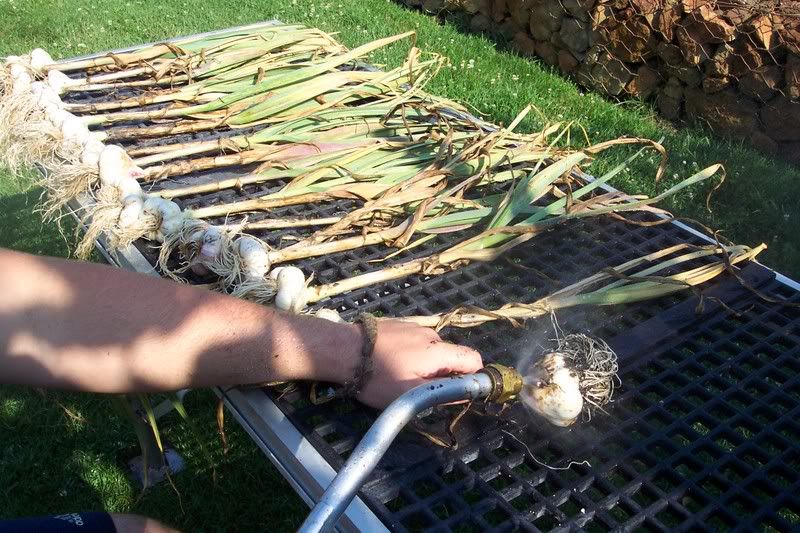
Then they are laid out on a table in a shady spot to air dry and cure for several days.
It is during this curing period that the individual cloves form their papery skin. I used a bulb of garlic yesterday and the cloves were surrounded by a skin but it was still white and soft making it a little hard to peel.
Once the garlic has cured, the tops may be cut off and the bulbs stored in the fridge until use.
“Soft neck” garlic tops may braided to form a “rope” of garlic. This makes a very nice gift for your cooking friends.
We harvested somewhere between 400 and 500 bulbs of garlic from our 6 beds this week. Most will have their tops cut off and be given away to our garlic loving friends.
Bob
